#inuit mythology
Text
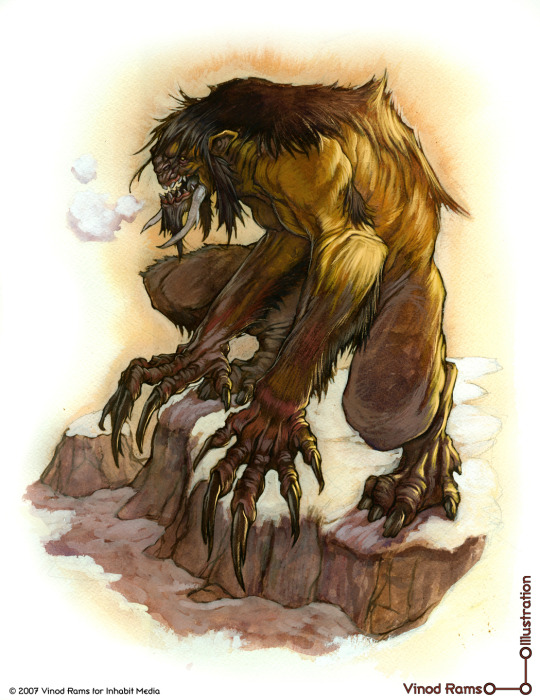
The Kukilialuit [Inuit mythology]
According to Inuit mythology, the frozen landscapes of Canada and Greenland are home to a mysterious and highly dangerous race of monsters. They are called the Kukilialuit, and while that name is often translated as ‘trolls’ or a different common word for monsters, their most defining characteristics are their long and viciously sharp claws, said to be like knives. Literally translated, the name Kukilialuit means something like “those beings with great claws”. Aside from their hands, they have a humanoid body.
Supposedly, the Kukilialuit live inland, far away from the coasts. Despite their monstrous nature, they are intelligent and build huts to survive the winter. Whether these are isolated huts or built together in a society or settlement is unclear.

What we do know is that they are relentless hunters and regularly eat human flesh. After killing a victim, the Kukilialuit carry their prey away and vigorously slice the flesh from their bones until only the skeleton remains. Slingerland and Collard use the story of a Kukilialuit as an example of folktales where lone travelers (or people who get isolated from a group) get picked off by monsters, teaching the audience that traveling by yourself is dangerous in inhospitable environments like the Arctic.
Only a particularly powerful Angakkuq (an Inuit shaman) can escape from these monsters.
Sources:
Christopher, N., 2013, The Hidden: a compendium of arctic giants, dwarves, gnomes, trolls, faeries, and other strange beings from Inuit oral history.
Slingerland, E. and Collard, M., 2011, Creating Consilience: Integrating the Sciences and the Humanities, New Directions in Cognitive Science, Oxford University Press, 472pp., p.634.
(image source 1: Vinod Rams)
(image source 2: Ethan Nicolle)
67 notes
·
View notes
Photo
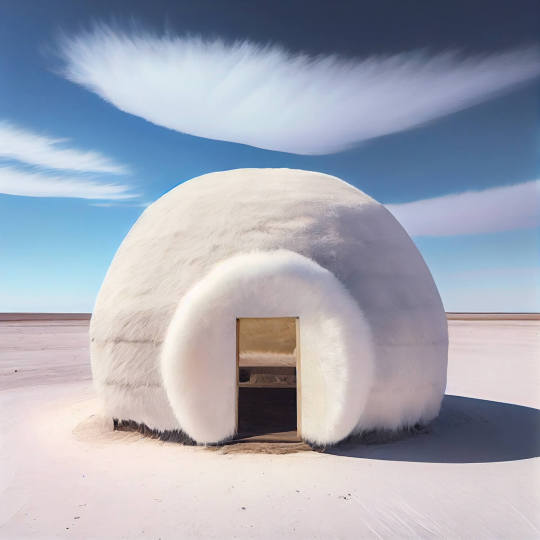




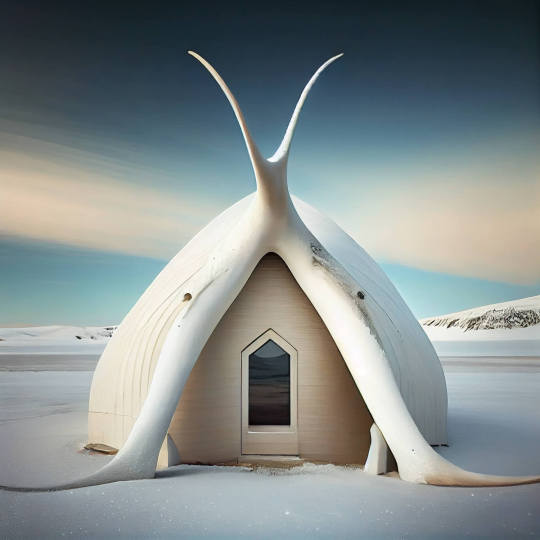
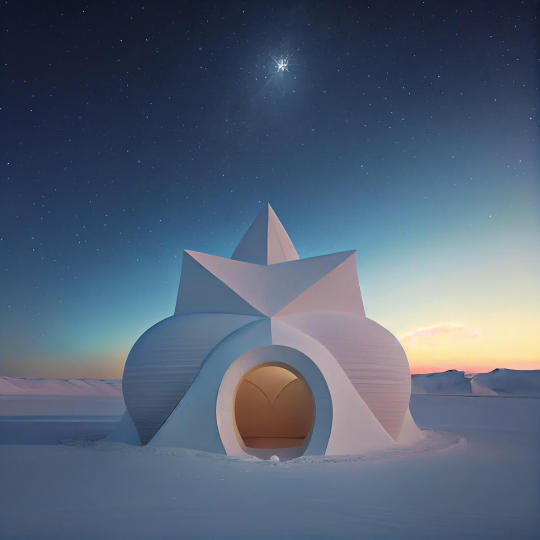


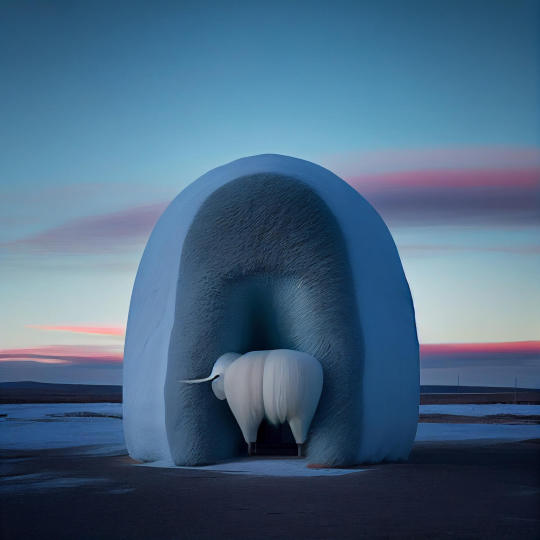
“Nuna,” Inuit Nunangat, Canada,
Over a millennium, the Inuit have inhabited in the Arctic/Sub-Arctic areas, which include the currently northern regions of Canada. The Inuit celebrates enriched histories that have long survived in the harsh environment. Today, Inuit cultures and traditions have remained resilient with active political activism and cultural renewal movements.
The Inuit have treated the land as a sacred being. It is the place where every animate and inanimate being is created from. Every entity is bonded with the land. Likewise, a human being is deeply attached to the land and is therefore told to treat it as part of himself/herself.
According to Uqalurait (An Oral History of Nunavut), any objects contains a soul (inua). And these souls travel across different beings. Inuits are told to be respectful when they hunt animals as they share the same inua. It is believed that animals sacrifice themselves to one that they find worthwhile. And Inuit are not advised to show off their catch. When they mistreat a particular animal, the offended animal would make themselves impossible to be hunted by humans.
Amauti House: Amauti (parka) grows into a house on her burial site.
Nanuq Den: Nanuq or polar bear is a highly regarded spirit among Inuit. As Nanuq enters into a house (den), he or she removes fur skin and transforms himself/herself into a human being inside the house.
Nunangat Vault: The snow covered vault leads to an archive of Arctic/Sub-Arctic storytelling and traditions. Ear canal shaped entrance invites visitors to rich oral histories of Inuit cultures and traditions.
Issitoq Observatory: Issitoq (a flying eye in Inuit myth) lands on the ground in search of taboo breakers.
Arviq Pavilion: Arviq (bowhead) whale has long been an invaluable being for Inuit. As one of the most favourite beings by the creator in Inuit mythology, it provided Inuit with valuable resources for survival. The pavilion celebrates the return of Arviq and abundance of marine life.
Aiviq House: Aiviq (walrus) turns himself/herself into a house.
Stargazing Tepee: This snow hut provides a warm and intimate space for stargazing.
Ceremonial House: Music and dance elevate Inuit and their spirit, and they are a medium to transcend their physical world and communicate with sacred realms and beings.
Mosaic Igloo: Mosaic Igloo is an architectural aspiration for “Cultural Mosaic.”
Ijiraq: Ijiraq turns itself into a giant caribou to lure and hunt another caribou. Ijiraq is a mythical being that can transform into any form. It would be quite difficult to discern it as they can be disguised as animals or humans.
Yongwook Seong
#art#design#architecture#concept#canada#inuit mythology#inuit folklore#inuit#issitoq#observatory#mosaic#igloo#spiritualhealing#culture#yongwook seong#caribou#ijiraq#arviq#mythicalsausage#stargazing#music#dance#spiritual#arctic#sub-arctic#midjourney#render#cgiart#digitalart
239 notes
·
View notes
Text


SCP-058 and SCP-1836
#scp foundation#scp#fan art#fanart#scp 058#scp 1836#inuit mythology#inuit#whales#iceberg#heart#sedna
108 notes
·
View notes
Text
Biology? Mythology? Fish? What doesn't this video have?
youtube
14 notes
·
View notes
Photo


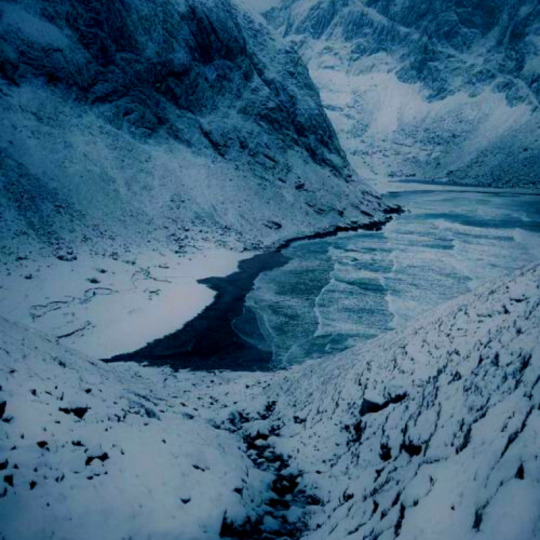



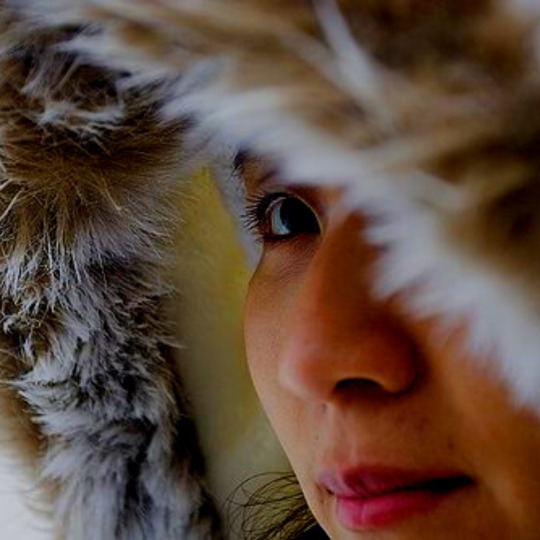


30 days of horror myths: qalupalik
much like the bogeyman, the qalupalik is said to kidnap misbehaving children in inuit mythology. the legend also has a practical purpose in keeping children away from thin ice or bodies of water, as this is where the creatures are said to live. if children are found alone at the edge of the ice, the qalupalik is said to stuff them into its amautik, before drowning them in the icy water.
#art is by joy ang so go check her out!#inuit mythology#30 days of horror myths#horror#horror myths#qalupalik#*#creatures
120 notes
·
View notes
Text
Inui pink

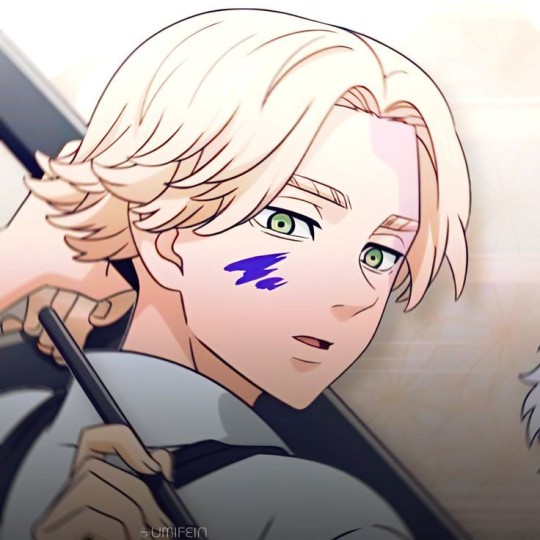


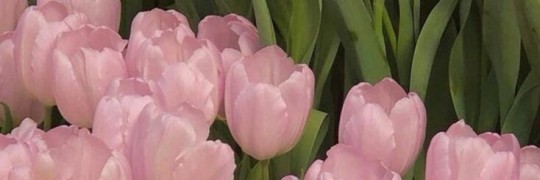




#art#headers#dividers#dividrs#fypツ#fyppage#colorido#anime icons#foryou#gif#pink obsessed#pink#inui x reader#inuit culture#inuit mythology#tokyo revengers inui#inui sajuna
33 notes
·
View notes
Photo

Inktober 52 2023 - Week 17 - ‘Melt’
HEY. IT’S MER-MAY. YOU KNOW WHAT THAT MEANS? That’s right, it’s warmer now. Too warm.
This elderly Greenland shark Mermaid (and very possibly the goddess of the sea- Sedna) is wondering why her home is melting. Maybe you got the answer.
#Sedna#greenland shark#mermaid#mermay#inktober52#ice#melt#artic#cimate change#sea#shark#elderly#inuit folklore#inuit mythology#sea goddess
22 notes
·
View notes
Photo

Mythological Deer - Tariaskug
“Said to coexist among humans, however on another plane of perception. If you try to look at one they will become formless or disappear to that other world. Sometimes their shadows can be glimpsed in the corner of the eye. They only become visible after being killed, where they appear to be half-man half-caribou.”
🔴 KO-FI
⚫ COMMISSION INFO
#art#myth deer#deer#cervid#cervidae#cervine#reindeer#caribou#inuit mythology#native american mythology
28 notes
·
View notes
Text
A'akuluujjusi
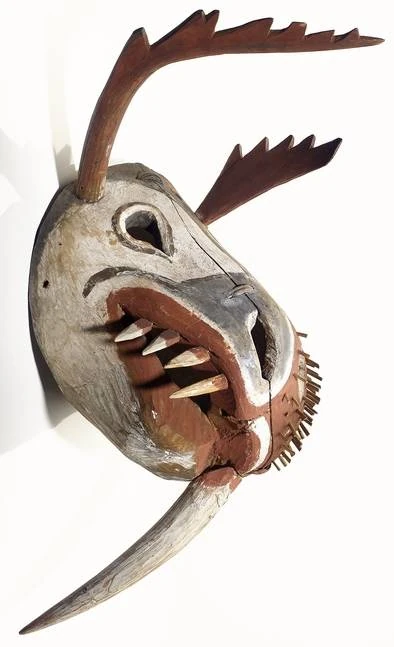
In Inuit mythology, A'akuluujjusi is the goddess of creation. She is a primordial goddess and the mother of the creator. It is said that she threw her clothes on the ground and created land animals. The animals that were first produced were flawed and rife with mistakes. For instance, walruses had antlers, and caribous had vicious tusks. She evetunally corrected these errors to create the more aestheically pleasing animals that we see today.
#Inuit mythology#creator mother#primordial goddess#Inuit#animals#walrus#goddess#created#versions#tusks#throwing#see#primordial#druidicentropy
3 notes
·
View notes
Link
In the western world, the sun is quite often depicted as masculine, accompanied by the feminine moon, often the sun god’s sister or wife. One of the most famous of these gods is Apollo, known for his unlucky love affairs, his archery skill, and his musical ability. But while the sun may often be seen as male, this is not always the case, and there are many goddesses around the world known for their connection to the sun.
Áine
An Irish Goddess or fairy, Áine is said to have many attributes including love, fertility and summer. One of these attributes is the sun. She is said to make her home in Cnoc Áine, or Knockainy a hill located near a village of the same name in the Irish county of Limerick. She is said to show herself on this hill at midsummer and will sometimes take on the form of a red mare who is too swift to ever be caught.
Many of the legends surrounding Áine involve her laying with mortal men and conceiving children – sometimes willingly and sometimes unwillingly. Her son Eogan was said to be the result of her rape by the human king Ailill, in retaliation for which Áine is said to have bitten off the king’s ear. This is said to have lost him his kingdom as an old law of the time stated that a king must be unblemished, which Ailill no longer was.
Keep Reading
#Myths#Mythos#Mythos Articles#Sun Gods#Sun Goddesses#Goddesses#Sun Deities#Solar Deities#Irish Gods#Aine#Amerasu#Gnowee#Malina#sunna#Xihe#Irish Mythology#Chinese Mythology#Japanese Mythology#Inuit Mythology#Norse Mythology#Wotjobaluk Mythology#Australian Mythology#Myths and Legends#Global Mythology
68 notes
·
View notes
Text

Taqqiq, the moon spirit [Inuit mythology]
Ever-present in the night sky, the moon plays a central role in countless folktales and myths from around the world. In native Inuit religion, the moon is inhabited by an Inua (supernatural spirit) named Taqqiq, which literally means ‘moon’. This enigmatic but benevolent creature watches over humanity and is responsible for guiding the souls of the dead to the afterlife. He once was a mortal man, and his transformation into the moon spirit is the subject of several different stories. Details differ, but a common version has it that he lusted after his own sister, Siqiniq. According to one tale, he made his advances at night, when it was too dark for her to recognize him. But Siqiniq was clever and smeared her body with black soot. The next morning, she saw Taqqiq’s face was blackened with soot and realized that it had been him. He chased her and she fled into the heavens and turned into the sun spirit.
Taqqiq, still chasing after her, followed his sister into the sky and eventually became the moon spirit, ironically reflecting his sister’s fate. He deeply regrets his actions and tries to make up for them. Perhaps because of this, he is said to sometimes descend to the Earth when women are abused and then saves them. Sometimes, he takes them back with him to the moon, where they live happily as Taqqiq takes care of them.
His outfit is made with gorgeous white fur, and Taqqiq himself is said to be particularly handsome. In some stories, he is said to travel with a troupe of dogs. It is unclear to me where these dogs came from, but they are particularly powerful and large.
The moon spirit is also associated with the hunt: the Polar Inuit believe Taqqiq brought wild animals to the world of the living so that humans could hunt and eat (hunters would sometimes offer prayers to thank him), and in the belief of the Inuit of Baffin Island, these animals are specifically mentioned to be caribou and seals. Iglulik Inuit believe that Taqqiq would bestow good fortune on seal hunters, whereas the people from eastern Greenland believe him to bless whale hunters. Taqqiq is often depicted with his signature whip, which he uses to hit young boys, as it is his role as a spirit to harden them into strong hunters. While this is a harsh (and presumably very traumatic) way to teach a kid a lesson, Taqqiq is regarded as a protector of young boys and defender of the weak.
Source:
Taylor, J. G., 1997, Deconstructing deities: Tuurngatsuak and Tuurngaatsuk in Labrador Inuit Religion, Études Inuit Studies, 21 (1/2), pp. 141-158.
Christopher, N., 2013, The Hidden: a compendium of arctic giants, dwarves, gnomes, trolls, faeries, and other strange beings from Inuit oral history, 191 pp, p. 178-181.
D’Anglure, B. S. and Philibert, J., 1993, The Shaman’s Share, or Inuit Sexual Communism in the Canadian Central Arctic, Anthropologica, Canadian Anthropology Society, 35 (1), pp. 59-103.
(image source: Christopher Stevens, painted for Pivut Magazine, Copyright Inhabit Media)
34 notes
·
View notes
Text
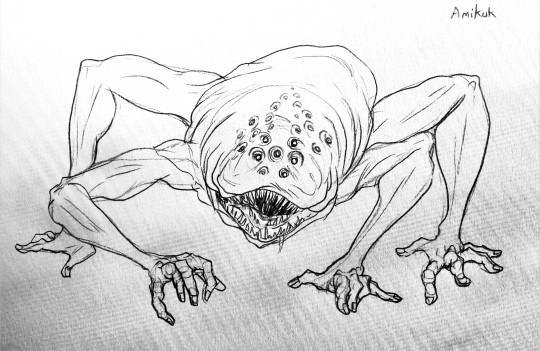
Ancardia's Greatest Monstrosities--The Amikuk
Classification: Monstrosity (horror)
Habitat: Icy waters, especially well-known in the Sea of Plates and the Sea of Spires.
A monstrosity most terrifying and dangerous to behold, the Amikuk is most known in Sostunian lands, believed to have first been the terrible servants of a powerful cult to Isrecht in the early 11th Age, now their numbers unleashed from any control but their own distorted ties to the Fallen God and free to breed and cause terror wherever they go. The Amikuk are semi-aquatic creatures, lurking often just at the edges of sea ice, or just beyond the end of stronger currents and sea breakers if ice is not around. Amikuk are generally averse to any individuals expressing strong will to live, strong motivation, strong passion or otherwise a strong desire to take an action—as a result, they very often target those native individuals at the river, bay, or seaside at their subsistence or creative activities—fishing, building fish traps, boat-building or repairing boats, or hunting of seals or other marine beasts.
An amikuk is roughly a meter long and a meter wide in legspan, appearing most like an oval, heavily-wrinkled blob of flesh with a many-eyed and wide-mouthed face. It has four limbs, all of which resemble humanoid arms, which gives it a wobbling, awkward yet swift spider-like gait. It is unusually strong for its size, likely owing to a feature of its musculature that includes a number of rigid bony struts protruding from its pectoral, trapezius, tricep and bicep tendons which enable more muscle fiber connections than in a normal animal and thus greatest muscular strength. However, the monstrous creatures is noted by Sostunian warriors and rangers to have a fairly low endurance, and if fought off aggressively from an area for longer than a half hour will retreat and not return for long periods. This generally renders all permanent and semi-permanent summer fishing and winter whaling settlements relatively safe from amikuk attack within about a quarter mile. It is not currently known how amikuk reproduce their numbers—though some theories by leading mages on the subject include the possibility of budding, a froglike reproduction in the shallow cold seas they inhabit, or a viviparous emission of several parthenogenic close offspring at a time. In any case, amikuk encounters are sporadic and rare in this day and age.
#ancardia#ancardian homebrew#bestiary#mixed media#creatures#Ancient Domains of Mystery#ADOM#Dnd-like#monstrosity#Amikuk#A-Mi-Kuk#Inuit mythology
11 notes
·
View notes
Text
Personal takes on Other Goddesses from Different Mythologies (Sedna and Hathor)
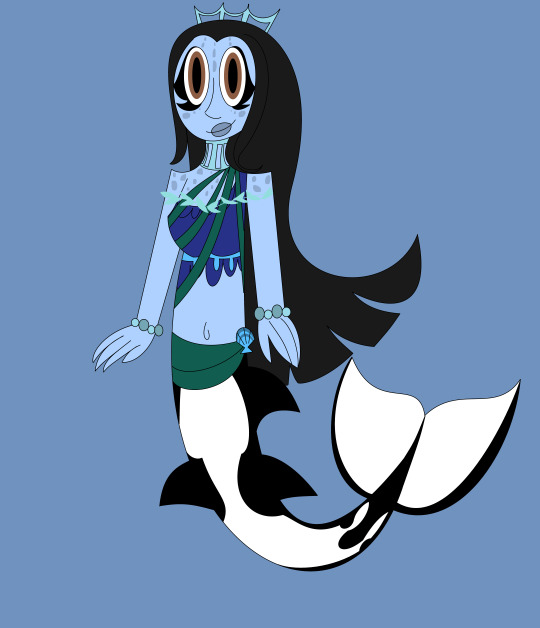
Sedna
The Inuit Goddess of the Sea and Marine Animals.
Sedna is known as the Mother or Mistress of the Sea. There have been particularly many versions of Her Story that have been retold throughout the Years.
She’s also known by many different names from different goddesses.
In many versions of her, she was either the Daughter of a Goddess or a God, but one of the Other Versions of her say that she was a Mortal Woman and that Men admire her Beauty but she ended up marrying an Animal (either a Dog or a Bird depending on which version).
Most of her Stories of where she was born as a Human say that she ended up falling into the Water and became a Goddess. But she is described as being the Most Fearsome Goddess in all of Inuit Religion.
SBSP Universe
Sedna is the Inuit Goddess of the Sea and Marine Animals. She is mainly the Protector of All Sea Animals around the Arctic as the Arctic Sea Folks claim her as their God much like how Neptune is towards the Bikini Bottom.
She is extremely Sweet, Kind, Loving, and Caring. She is mainly a Mother Figure to all of her People as she is known by her many title names such as “Mother of Marine Animals”, “Mother of the Sea”, or “Mistress of the Sea”. Unlike Neptune and Poseidon, she is mainly not cruel or arrogant, but is rather mainly thoughtful and gentle.
But she does tend to suffer abandoned issues ever since she was abandoned by her Father and as a Protector of the Sea, she would scare Fishermen away from the Arctic to prevent capturing her own People.
She was once a Human Mortal living with her Father after her Mother died. Men began to admire her Beauty but considering that her Father wanted his Daughter to marry any Man, Sedna mainly rejected any of their own proposals to her.
When a Strange Man came to her Homeland, she was surprised to meet a Mysterious Man who greeted her and asked her Father for permission to marry her. Her Father agreed as he made a Love Potion for his Daughter to fall in love with the Man and accepted him in exchange for Fish as Sedna was taken away by the Handsome Man.
Unfortunately, the Man revealed himself that he was a Bird who wanted her for a Wife which shocked Sedna since this was a kidnapping all along.
Sedna spent Days on Bird Island while being forced to live with the Bird that fell in love with her. Her Father really missed her very much, so he rescued her from the Island and traveled back to their village. When the Bird found out that his Bride was missing, The Bird chased Sedna as he wanted her back so he caused a huge storm over the Ocean which made Sedna’s Father accidentally throw her into the Water where she was transformed into a Sea Goddess as Marine Animals starting to grow from her own Fingers and became the Goddess of the Sea.
She never really saw her Father or the Bird ever again as she had to live and move on with her new life. Her Father briefly abandoned her and it was unknown what happened to the Bird after when She escaped, she claimed the Sea as her New Home as the Sea Creatures started to worship her around the Cold Lands.
Her people even call her “Mother Sea” or “Sea Mama”.
She happens to like Neptune and Poseidon despite their major differences.
She also likes SpongeBob, Patrick, and Squidward but she strongly dislikes Mr. Krabs because of his Greed.
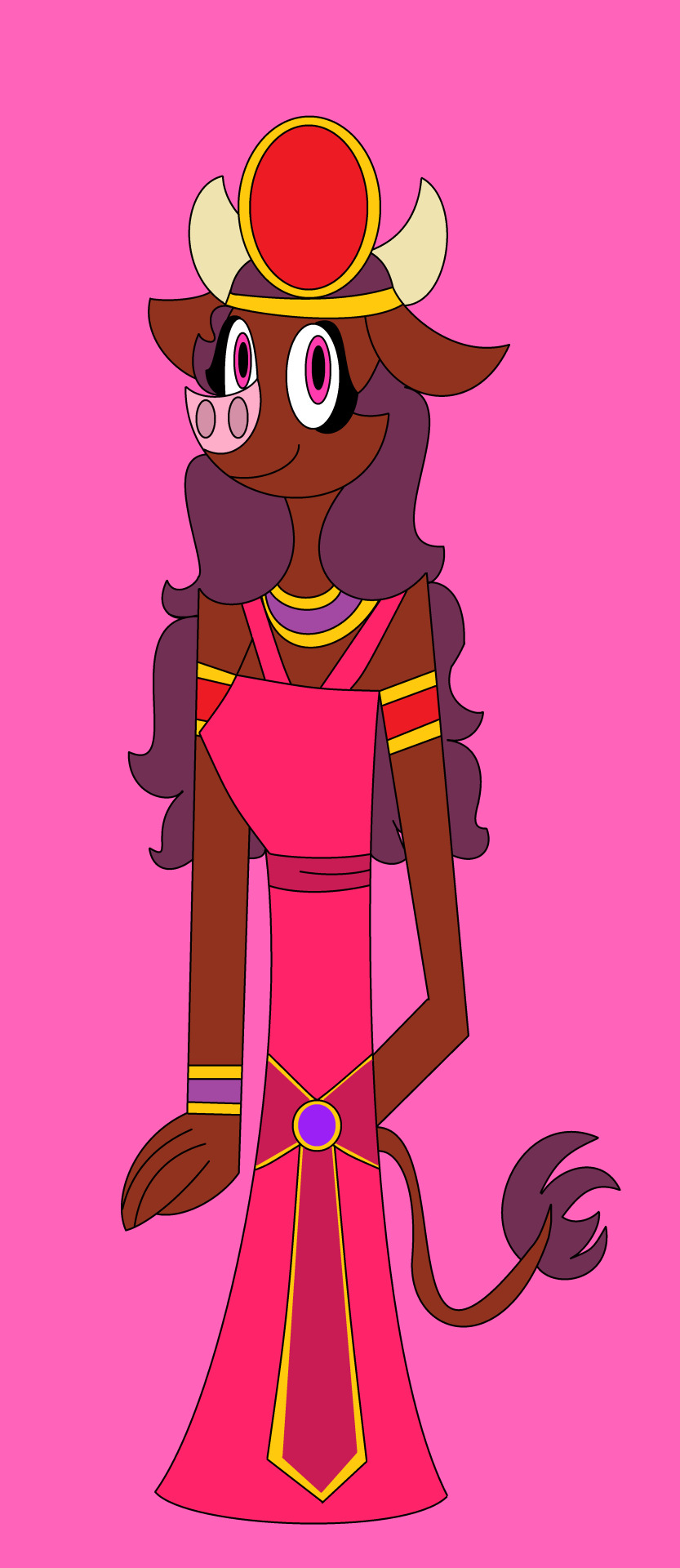
Hathor
The Egyptian Goddess of Love, Beauty, and Music.
One of the Most Famous Goddesses of Egypt and even one of the Children of Ra as she’s often associated with Bastet and Sekhmet. She is also a Mother Goddess because of the Earthly representatives, known for her Queenship with either Horus or Ra representing Kingship.
She also crossed between Two Worlds including Life and Death for she helped the Dead in the transition to Duat since she was associated with many things other than Love like Dancing and even the Afterlife.
In some versions of her Origins, she was said to be a Daughter of Ra for She and Bastet were born the essence of Sekhmet (who was created by Ra through his Eye when Ra felt disrespected due to how most of Humanity in Egypt were losing in the sign of respect in the Egyptian Sun God).
Another version believes that she came from the beginning of the Earth along with Ra or Khonsu while other versions state that she was somehow a Daughter of Ra and Nut.
Ra was upset after being insulted by another god, Babi but Hathor cheered up Ra by exposing her own genitals towards him which made Ra laugh as Ra went back to perform his duties as Ruler of the Egyptian Gods.
Hathor was praised for her beautiful hair, she lost a lock of hair that represented her sexual allure. Implying that the loss of Hathor's lock was as catastrophic for her as the maiming of Horus and Set was for them.
In the The Contendings of Horus and Seth Myth, Hathor found Horus lying in the desert as he wept so Hathor captured a gazelle and milked it for Horus.
SBSP Universe
Hathor is The Egyptian Goddess of Love, Beauty, and Music. She is the Wife of Horus, the Current Queen of Egypt, and even the Mother of their Sons (Imsety, Duamutef, Hapy, and Qebehsenuef).
She is Very Kind, Loyal, Loving, Well-Meaning, Positive, and Passionate. As the Goddess of Love and Beauty, she tends to enjoy festivals of Egypt as she loves to Sing, Play Music, and Dance with the Gods and the Humans. She can heal broken relationships and even heal people with her Power of Love and can take away the smooth pain away in those who have been wounded.
She loved Horus when they were Kids. And although Horus didn’t like him at first, they grew up and fell in love during the years when Horus had to live with his Mother as a Peasant, even after Set got to take over Egypt and overthrow his Brother (Osiris).
She even helped out Horus during his Trials against his Evil Uncle (Set) as Hathor threw a spear at Set’s butt in his Beast form to save Horus. Even after Set was banished for punishment, Hathor became the Current Queen of Egypt and married Horus as they ruled over the Egyptian Lands amongst their Pantheon. She even bore Horus their own Four Sons.
She does like Neptune and Poseidon since the Egyptian Gods were often bond with the Roman and Greek Gods as Hathor seems to be a Friend of both Venus and Aphrodite.
She also likes SpongeBob and Patrick and would like to dance with Pearl due to their love for Music and Dancing
14 notes
·
View notes
Text
Headcanons
Guide for tormented hearts
Just some ideas I gathered for The Hunt [Ao3] and You do need a friend
Hank is Y/N's older brother and main character of The Hunt.
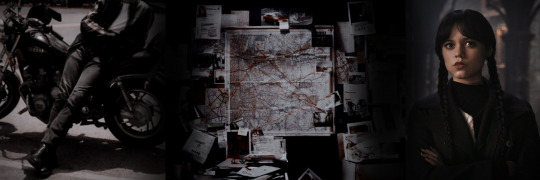
Wednesday Addams x OC! Hank Hunter(L/N)
Not a relationship. Not quite a friendship either — a partnership. They have a deal: Wednesday investigates whatever she wants, as long as Hanks knows enough about it to keep Nevermore and its students — her included — safe.
Hank’s thick-skinned; he is a demon after all, and Wednesday can’t get away with him at first. She doesn’t trust him, he doesn’t trust her, but they have to work, somehow. And they do. So long as she keeps her distance from him. Only a touch, and a raven like herself can bring the devil out of him. It happened before, and she saw his past — he will never let it happen again. Their fights and banters reduce after some time, but never really stop.
Their den is the proof: of their countless crimes and troubled partnership. The Gates Mansion’s basement, the place where only mad people would dare to step in, became the perfect hideout for their clues, traps and spoils. But that’s the perfect word to describe them: “mad”. Psychics and Keepers do not get along well so they actually become more waxy than usual around each other.
"Don't you trust me, Wen?" "No." "Good, I'd be disappointed if you did."
"You are too young for a successful explorer." "You're too young for such a bitter ghost.”
"It's a shame that you were deceived so easily, but it's understandable. Love and hormones cause these things." "Take back what you said or you'll never say anything ever again." "Am I wrong, Juliet?" (He finds out about Tyler)
But they lose touch once Tyler Galpin and Vincent Thorpe get properly arrested. Wednesday’s stalker is gone, Hank’s parents leave Jericho; no more investigation truly needed. Addams gets bored, and that was more dangerous than Hank could ever have thought. He had to take her out of jail five times in a week when school restarted; stupid normie kids were paying from their sins, but Wednesday was no saint. The principal knew it and Hank worked hard to get her out of his sight. That’s how the “stupid” riddles started, and they remained appearing at Wednesday’s dorm until she met Hank’s brother, Y/N.
After finally making a friend, Y/N tells Hank about her, and he freezes. Wednesday is the last person that he wanted his brother to be friends with. He can’t change it, still, he doesn’t approve of it. Wednesday realizes it when the riddles stop coming and Y/N becomes her new investigation partner, Hank liking it or not.
#headcanons#my fic ideas#wednesday#wednesday addams#wednesday fanfic#ao3 fanfic#original character#inuit character#inuit mythology#wednesday addams x original character
8 notes
·
View notes
Text
Cold winter: Tekkeitsertok
TEKKEITSERTOK
Category: Inuit mythology
If you search for Tekkeitsertok online... well you won’t find much. You will find a short Wikipedia article, and a lot of websites repeating ad nauseum the same Wikipedia article over and over again. Despite being a prominent god of Inuit mythology, he seems to be really kind of forgotten… All the love seems to go to Sedna X) I do not own books or studies about Inuit mythology per se – all I have are big encyclopedias that do describe Inuit mythology but go quickly over it and doesn’t add much…
Anyway, here are all the facts I could gather about this Inuit god. If you have more accurate or useful info, do not hesitate to share!
1) Tekkeitsertok, according to Wikipedia, is the most prominent and important of the hunting gods of the Inuit – while other websites call him THE hunting god of the Inuit mythology. Indeed, apparently it was traditional during the hunting season to give him a lot of sacrifices, it was the “high time” of his worship.
2) Tekkeitsertok is the master of all the caribous – and while some only describe him as lord of “caribous”, over extend his rule to all deer in general. I have to admit I do not know much about the Inuit fauna so… I don’t know if it makes a big difference X) There is also apparently a tradition in modern days to depict Tekkeitsertok as a caribou-headed man. I didn’t find any proof that it was how the Inuit saw him, but that’s how people like to depict him in recent decades.
3) The Wikipedia article extends his “lordship” over deers/caribous and his hunting functions as becoming some sort of master of all animals: according to it, Tekkeitsertok can actually bring aid to the creatures that enter his territory, or ban them from the area he resides in. Wikipedia also has a strange line about him being the “protector of any creatures that enter any parts of the northern sky”. Now I don’t know if they speak figuratively, the “northern sky” being a fashionable to say the Inuit territory ; or if they speak literally because in Inuit cosmology the skies are the regions in which live gods, spirits and ghosts, so… I don’t know, it is mysterious.
4) What Wikipedia doesn’t tell you however is that Tekkeitsertok is an earth god: many websites of good reference list him as an “earth god” and my own mythology books push it further by saying that Tekkeitsertok is both the god of “the earth and the land” (as in the earth, the physical earth, and the land as a social and cultural concept, the Inuit land and the earth you walk upon).
5) He is important. While the Wikipedia’s article make it seem like he is just “the most important of the hunting gods”, all my other sources make it very clear that Tekkeitsertok is actually the most powerful of ALL the gods, and the most important god of the pantheon (well, beyond the Inuit incarnation of the “Great Spirit”, that is above all gods).
And that’s it… I couldn’t find more and I don’t have any book about Inuit mythology to get my hands onto. If you ever have more info about this god, don’t hesitate to share – but this is all I could find for now. Despite him being so important for the Inuit society and religion (hunting is a BIG thing), he is… really kind of forgotten by people studying mythologies in general apparently.
10 notes
·
View notes
Photo

Utakata as Sedna from Inuit mythology for Mermay
#Utakata#naruto#mermay#naruto fanart#azuzel23#azuzeldraws#mythology#linocut#inuit mythology#sedna#mermaids#tiny bubbles
37 notes
·
View notes